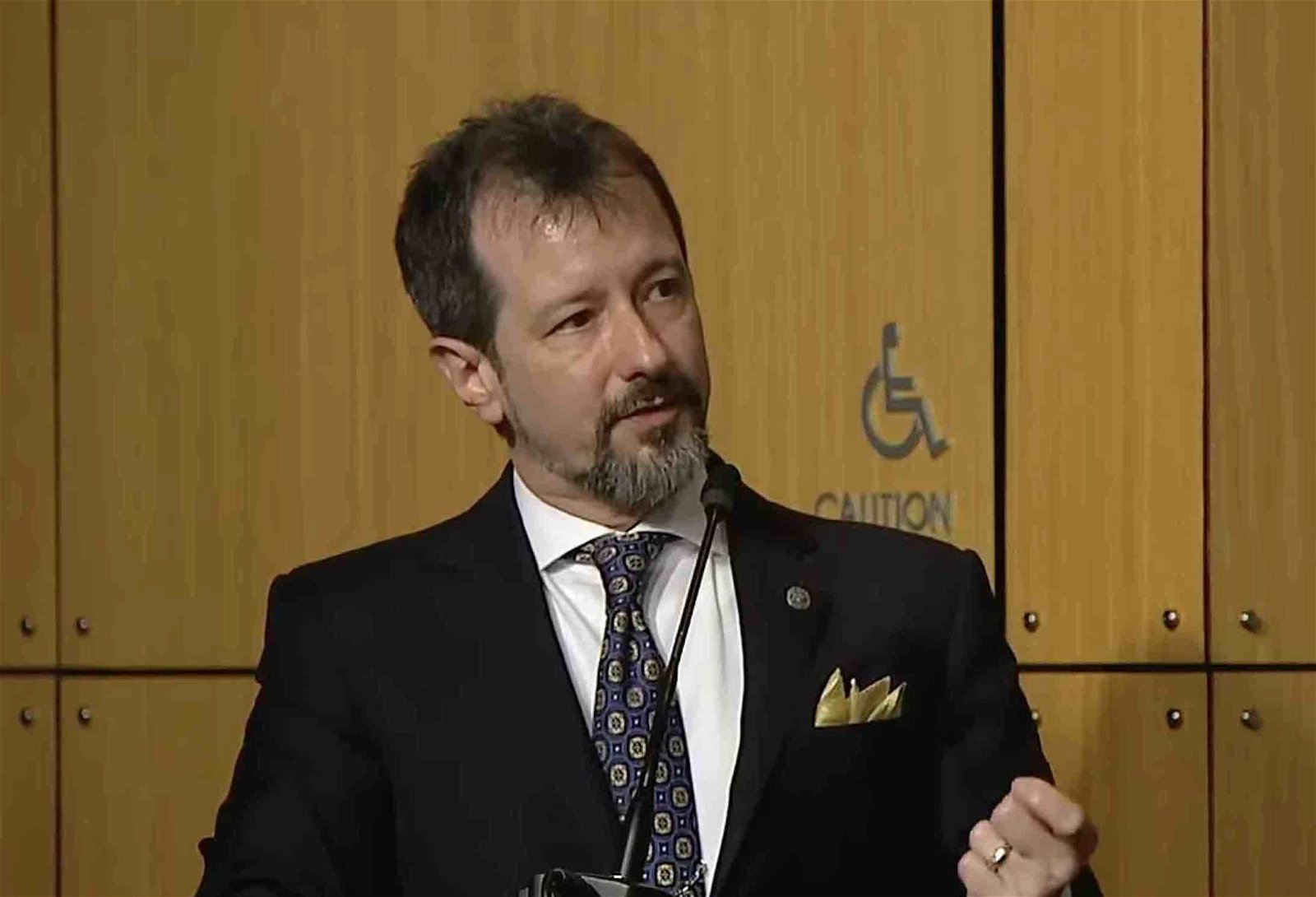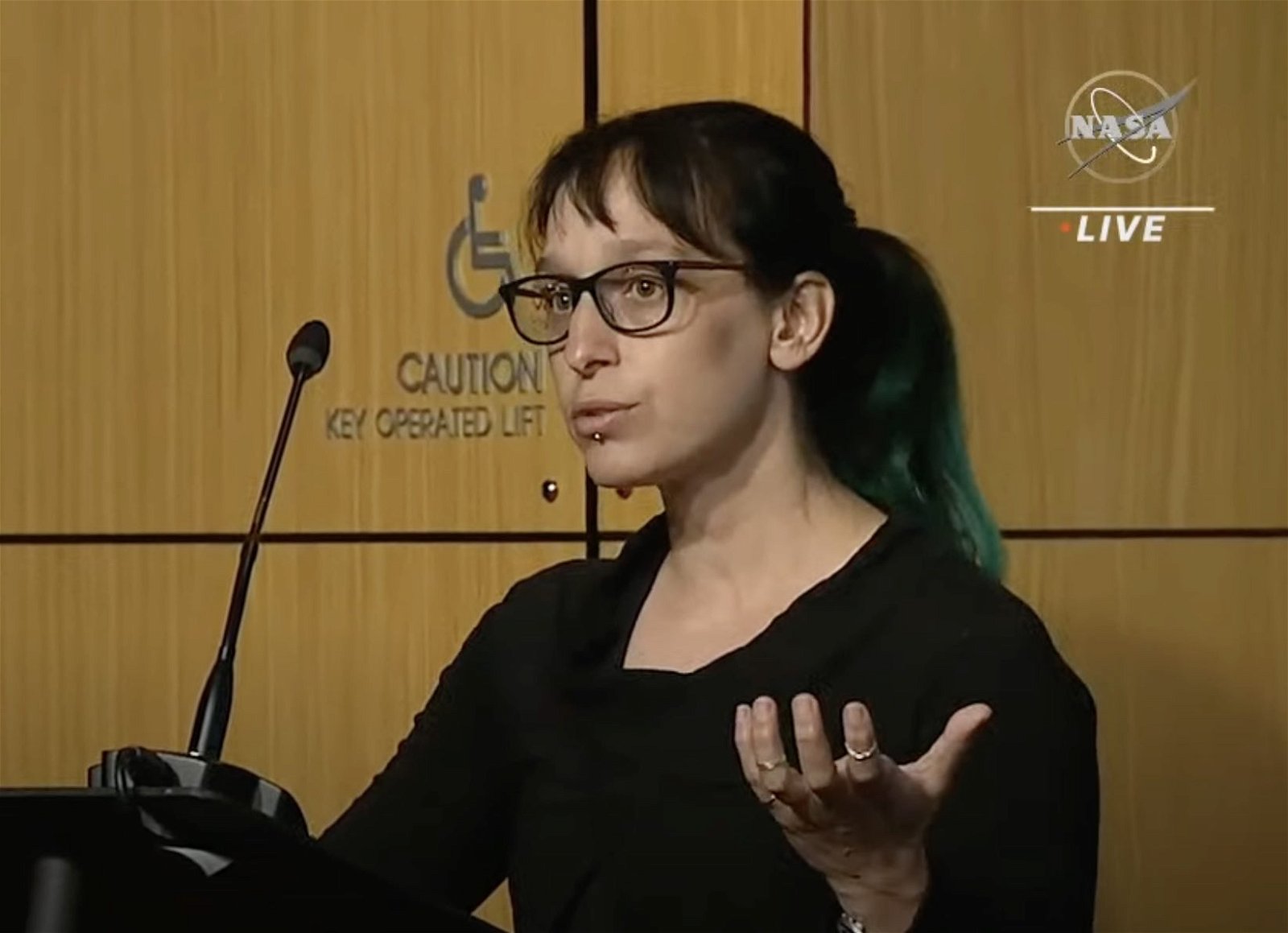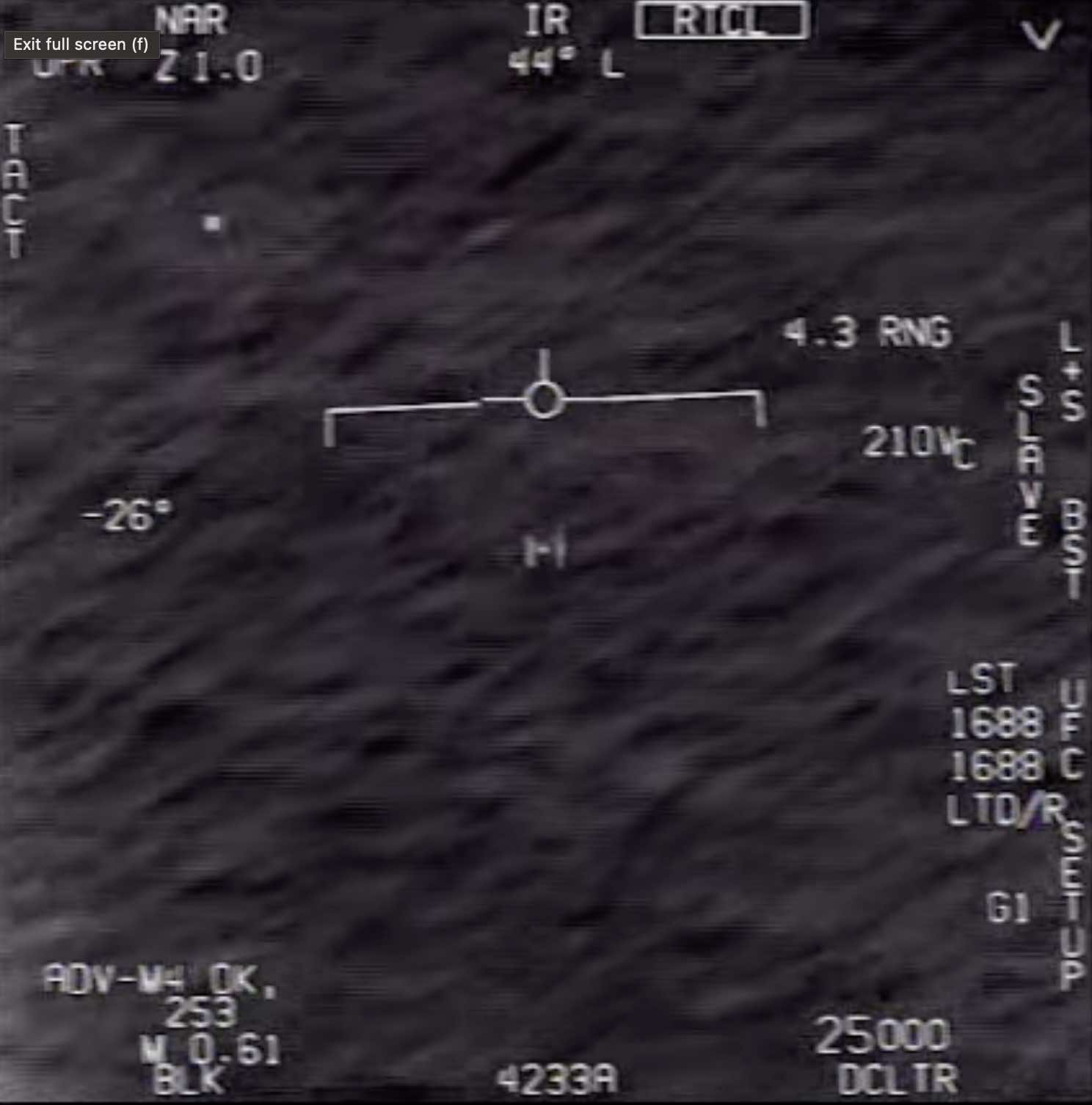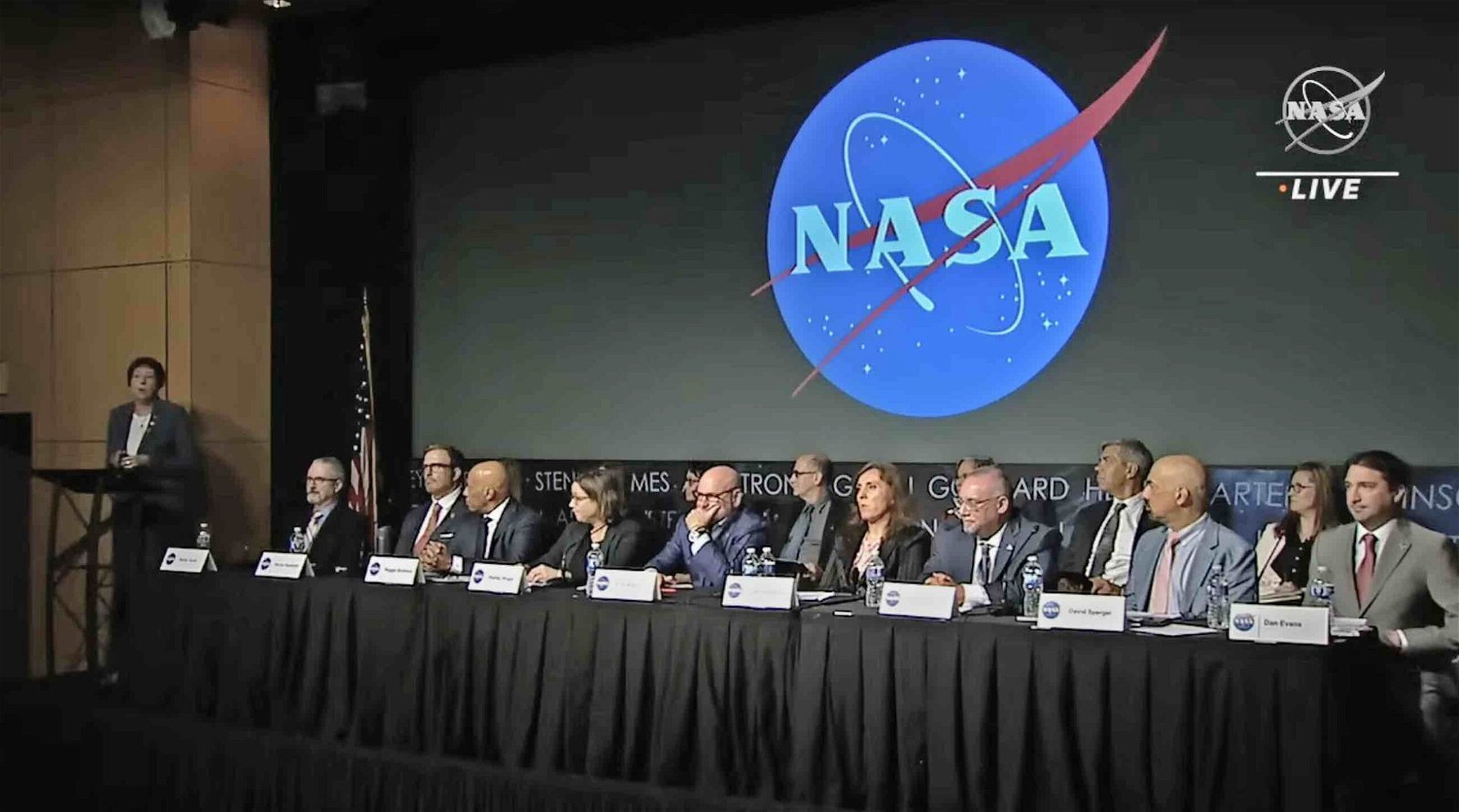On Wednesday, members of a NASA independent study team held a public briefing on its current efforts to categorize and evaluate data related to unidentified anomalous phenomena, or UAP, in a meeting that included participation from DoD and FAA officials involved in similar efforts.
According to NASA, UAP can be defined as “observations of events in the sky that cannot be identified as aircraft or known natural phenomena from a scientific perspective.”
During opening remarks at Wednesday’s event, Daniel Evans, assistant deputy associate administrator for research with NASA’s Science Mission Directorate, said that the team updated its terminology to convey that UAP represented all-domain “anomalous” phenomena rather than merely aerial observations. However, Evans clarified that most of the data NASA has currently evaluated as part of its independent study still involves observations of aerial phenomena.
During opening remarks, Evans also expressed his displeasure “that several of the study members “have been subjected to online abuse due to their decision to participate on this panel.” Evans added that NASA’s security team “is actively addressing this issue.”
Speaking after Evans, NASA Associate Administrator Nikola Fox also addressed the harassment that several of NASA’s independent study team members have faced.
“NASA stands behind all panelists,” Fox said, “and we don’t tolerate abuse. Harassment only leads to further stigmatization of the UAP field.”
Following Evans and Fox, David Spergel of the Simons Foundation and Chair of NASA’s UAP independent study team discussed the necessity for obtaining better quality data.
“We need high-quality data,” Spergel said, addressing the often-sporadic data collection methods used to collect information on UAP, adding that most of the data that has been reviewed by NASA’s independent study team have not been collected using properly calibrated scientific instruments.
“We design our telescopes to work at night,” Spergel said, noting visual anomalies that arise from reflections and other optical issues that cause what astronomers call “ghosting.”
“Those kinds of anomalies degrade the quality of the data,” Spergel added, emphasizing the need for utilizing properly calibrated instrumentation in efforts to collect data on UAP.
Following Spergel, Dr. Sean Kirkpatrick, director of the DoD’s All-domain Anomaly Resolution Office (AARO), gave a short presentation on his office’s findings, noting that AARO is proud to work alongside NASA and its independent study “as the U.S. government moves toward greater transparency on this issue.”
Kirkpatrick said that only a small number of UAP incidents include objects that demonstrate anomalous characteristics, noting there were “no maritime reports and no space reports” in the current data shared by AARO.
However, Kirkpatrick shared several slides that included updated versions of those previously shared during a Senate hearing earlier this year, which conveyed AARO’s latest data on typically reported characteristics of UAP, as well as recommendations for NASA’s independent study.


Kirkpatrick also addressed a video depicting a metallic orb filmed over the Middle East that was first revealed during the Senate session several weeks ago, noting that similar objects have been seen “all over the world,” adding that “we see these making very interesting apparent maneuvers.”
Responding to a question from study member Nadia Drake about the number of reports currently in AARO’s collection, Kirkpatrick said, “We are now over 800,” noting that close to 100 new reports were obtained from recently acquired Federal Aviation Administration (FAA) data on UAP.
In 2021, The Debrief was the first to report that the FAA was actively collecting information on UAP, which it had been providing to AARO’s predecessor agency, the Unidentified Aerial Phenomena Task Force (UAPTF). It is unclear whether this data had been provided directly to AARO or if Kirkpatrick and his Office had been required to request it from the agency.
Kirkpatrick added that “less than single-digit percentages of the total dataset” comprised those objects which AARO deems to be “possibly really anomalous,” comprising maybe 2-5 percent of the total numbers collected. Kirkpatrick added that the next annual report produced by his office is currently being completed and prepared for release later this year.
Echoing earlier statements from NASA’s independent study team members, Kirkpatrick said he and AARO staff have also been subjected to harassment.
“My team and I have also been subjected to lots of harassment,” Kirkpatrick said, “especially coming out of my last [Senate] hearing because people don’t understand the scientific method.”
“People want answers now,” Kirkpatrick said, which he said feeds the negative stigmas against UAP reporting and studies, emphasizing the importance of NASA serving as a leader in public scientific discussion of the phenomenon.
“NASA should lead the scientific discourse [on UAP],” Kirkpatrick said, adding that it represents “a hard target problem.”
During his presentation, Kirkpatrick characterized anomalous phenomena as “anything that is not readily understandable by the operator or the sensor.”
Kirkpatrick said that within the last few days, the first “Five Eyes” meeting had been held with his Office on the topic, referencing cooperative efforts between the UK, Canada, Australia, New Zealand, and the United States on UAP studies.
Following Kirkpatrick’s presentation, Mike Freie, Technical Advisor at the Air Traffic Surveillance Services Office with the FAA, spoke about his agency’s mission and data related to UAP that it collects.
Freie discussed the various types of surveillance systems the FAA uses, which include Cooperative Surveillance and Non-Cooperative Surveillance systems, the latter comprising short and long-range radar, automatic dependent surveillance-broadcast (ADS-B), and surface surveillance systems used in coverage of surface on approach and departure paths of aircraft.
Freie emphasized that no classified DOD systems or other sensitive information were utilized in the data he shared.
“There is a process by which air traffic controllers can report UAP sightings or events,” Freie said. “Historically, those have been in the range of 3-5 reports per month,” Freie said, noting that Starlink launches appear to have caused a recent uptick in reports by pilots. A similar rise in reports followed the appearance of a Chinese surveillance balloon that passed over the U.S. earlier this year.
“That’s 3-5 reports per month across the entire 14,000 controllers per month,” Freie also clarified, noting it was a “very small percentage.”
Freie said that data on UAP is retained for an undefined period of several months, likely in an unprocessed form.
Following a break for lunch, team member and science journalist Nadia Drake addressed the number of credible UAP sightings in recent years while also emphasizing the need for applying science toward the issue.
“There is no conclusive evidence suggesting an extraterrestrial origin for UAP,” Drake said, citing the necessity for additional scientific data before UAP can be characterized and their origins can be determined.
“In science, skepticism is not a bias, nor is it a bad word,” Drake added.
Paula Bontempi, Dean of the Graduate School of Oceanography at the University of Rhode Island, spoke about NASA’s focus on transparency, and the availability of information the agency produces, adding that NASA’s experience with long-term missions makes it well-equipped to study UAP.


Following Bontempi, Federica Bianco with the University of Delaware said that machine learning methods could be applied toward automation and retrieval of data to aid in the study of UAP.
“The current status of the UAP data… will make this really hard,” Bianco added while noting that NASA’s studies of UAP could nonetheless “be an opportunity to really increase the reach of science.”
David Grinspoon, Senior Scientist at the Planetary Science Institute, addressed the potential relevance of several existing NASA efforts to the study of UAP, despite there being no evidence study members had found that could positively link such aerial phenomena with extraterrestrial technologies.
“Within the scientific community, there is a widespread, but by no means universal belief that there are extraterrestrial civilizations,” Grinspoon said. “The same rationale which supports the idea that ET civilizations may exist and may be detectable also supports the idea that finding extraterrestrial artifacts in our own solar system is at least plausible.”
“NASA is the lead agency for solar system exploration,” Grinspoon said. “It already has an active program of detecting objects in our solar neighborhood, using both ground-based and space-based facilities, and it could leverage those capabilities to search for objects in space with anomalous motion, anomalous trajectories, unusual light curves, anomalous spectral signatures, or other characteristics.”
“Most of the solar system has not been searched for artifacts and anomalies,” Grinspoon added. “These modest data analysis efforts could potentially be applied to existing and planned planetary missions.”
“If NASA applies the same rigorous methodology toward UAPs that it applies to the study of possible life elsewhere, then we stand to learn something new and interesting.”
“Whatever the ultimate explanation is of those phenomena,” Grinspoon said.
Karlin Toner, Senior Advisor in Data Policy Integration with the FAA, mirroring the statements of earlier speakers, noted the apparent stigmas against “reporting or even researching such phenomena.”
“That said, by encouraging military aviators to disclose anomalies that they’ve seen or detected, the DoD is receiving many more reports,” noting Dr. Kirkpatrick’s earlier mention of close to 800 reports in AARO’s current holdings.
“I would propose to this panel that NASA can help make it safer for researchers to explore data in the civil aerospace domain simply by starting that work internally,” Toner said.
Following Toner’s remarks, Joshua Semeter, Director of the Center for Space Physics at Boston University, said that cases involving infrared and other sensory detections of UAP collected with advanced tracking systems in use by the U.S. military allow for direct calculations of parameters that include altitude and velocity.
“This multi-sensor approach is absolutely critical to charting a path forward for UAP investigation,” Semeter said.
To illustrate this point, Semeter referenced one of three historic Navy UAP videos, popularly known as “Go Fast,” noting that information that included the elevation angle of the camera, azimuth angle, target range, and other relevant data are all featured on the screen. Based on such information, Semeter said the object in the footage was not moving as quickly as the footage seems to convey, a conclusion consistent with previous analysis of the footage that concluded the parallax effect could account for the apparent speed of the object.


Offering reflections from his experience in space, astronaut Scott Kelly noted that the space environment is “so conducive to optical illusions,” adding his own past experiences with observations that initially caused him to consider whether he had been observing unidentified objects.
Mike Gold, Former Associate Administrator for Space Policy and Partnerships, expressed his concerns about how NASA’s efforts to study UAP could be undermined if efforts to preserve the data it finds aren’t undertaken, despite the widespread public attention the subject receives.
“I’ve been a part of far too many panels and studies that end up sitting on the shelf,” Gold said.
“I don’t want this to be one of those exercises,” Gold added.
“I would call for and recommend a permanent office within NASA to support this activity, albeit likely a modest one, but to collate this information… to archive the information, and act as the open, forward-facing counterpart to Sean [Kirkpatrick] and AARO.”
“I don’t want all our work to end up being in vain,” Gold said.
In a portion of the session devoted to questions from the public, Daniel Evans addressed charges that NASA may not have been forthcoming with information it possessed about UAP and criticisms that included it may have “cut the feed” during live streams of space missions when unidentified objects appeared.
“I really want to assure the public that this agency is absolutely cast iron committed to openness and transparency and honesty,” Evans said. “And that commitment also extends to our live NASA TV feeds. They provide real-time footage from our various missions.”
“To my knowledge, NASA has never intentionally cut a live feed to hide anything, and that includes UAPs, of course. Sometimes there are interruptions to our feeds, but that is simply because space is a complex place. There’s a vast array of natural phenomena, human-made objects, and so forth.”
Evans called the agency’s commitment to openness and transparency “the hallmarks of NASA,” adding that such values are “why we’re here today in public, on TV. Because we want the public to have the opportunity to see the process of this committee doing its work in public.”
“It’s only right,” Evans said.
Asked if there had been any evidence NASA’s independent study had come across indicating that UAPs may result from non-human intelligence, Anamaria Berea, associate professor of Computational and Data Science at George Mason University, said that it was “not a question you can answer very quickly with yes or no.”
“As scientists, we follow the data; we formulate hypotheses; we test theories. We follow the scientific process. The role of this panel has been to create a roadmap and a framework for how all scientists that are interested in this phenomenon can further study,” Berea said.
“We cannot make that kind of extraordinary claim for any big subject in science,” she added. “This question of whether we are alone in the universe is probably one of the largest questions that we’ve had in our history of science [and] in our history of humanity. And it’s not one we can take lightly.”
“We hope that within our lifetime we will be able to answer this question of whether we are alone or not, and also to better characterize… UAP,” Berea said.
Building on Berea’s statements, as the Wednesday session concluded, David Spergel added that the question over the existence of extraterrestrial life strikes at the very core of NASA’s mission.
“One of NASA’s big questions is, is there life out there?” Spergel said.
“A lot of what NASA is doing in its exploration of the solar system and beyond is focused on searching for life in any form.”
“Answering this question is one of the things that NASA as an agency is excited about,” Spergel said.
However, in summarizing Wednesday’s session, Spergel emphasized one overarching takeaway he has gleaned from the NASA independent UAP study team’s efforts.
“We need better data.”
A public report detailing the findings of NASA’s UAP study is expected to be made available by the end of July, Spergel said on Wednesday. Additional details about the study group’s efforts and its members can be found on its official page on NASA’s website.
Micah Hanks is the Editor-in-Chief and Co-Founder of The Debrief. He can be reached by email at micah@thedebrief.org. Follow his work at micahhanks.com and on Twitter: @MicahHanks.

